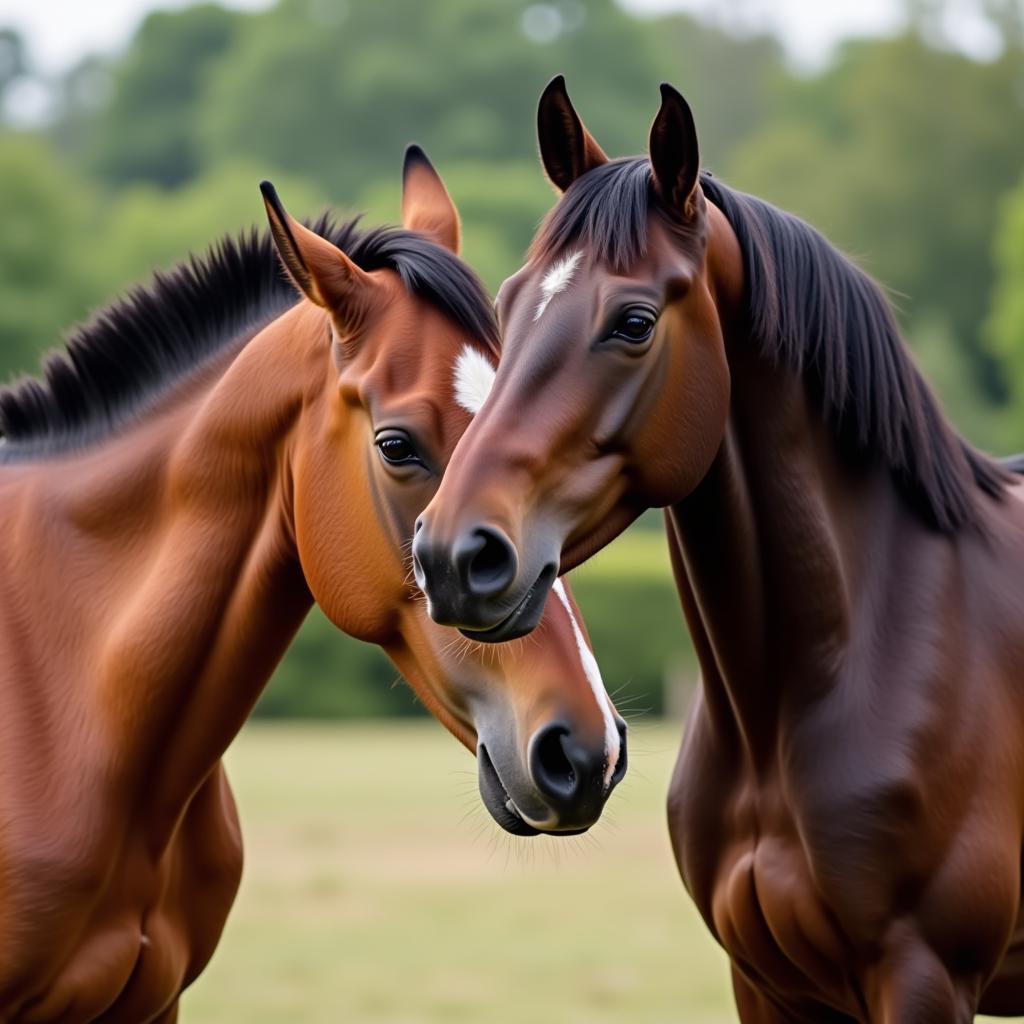Horse Mounting Horse: A Deep Dive
November 24, 2024Horse Mounting Horse, a phrase that sparks curiosity, often refers to the natural behavior observed in horses. While it might seem unusual to some, it’s a complex interaction with various underlying reasons. This article explores the possible explanations behind this behavior, from dominance displays to playful interactions and even reproductive instincts.
Understanding the Nuances of Horse Mounting Horse
Why do horses engage in horse mounting horse behavior? There are several factors at play, and understanding them is crucial to properly interpreting the interaction. While often associated with mating, mounting can signify much more in the equine world. It’s a crucial form of communication, expressing social dynamics and individual relationships within a herd.
- Dominance Assertion: Mounting can be a way for a horse to establish dominance over another, reinforcing their position within the herd hierarchy. This is particularly common in groups with multiple horses.
- Playful Interactions: Younger horses, especially foals, often engage in playful mounting as a form of social bonding and learning. This type of interaction is typically characterized by less intensity and shorter duration than dominance-related mounting.
- Sexual Behavior: While less common outside of breeding season, mounting can certainly be a part of courtship and mating rituals.
- Hormonal Influences: Hormonal imbalances can also contribute to mounting behavior. Mares, especially those with certain hormonal conditions, might exhibit increased mounting tendencies.
Decoding the Signals: Is it Play or Dominance?
Differentiating between playful and dominant horse mounting horse requires careful observation. Context is key: consider the age of the horses involved, their existing relationship, and the overall herd dynamic. Playful mounting is typically reciprocal and relaxed, whereas dominance-related mounting can involve pinned ears, bared teeth, and other aggressive signals.
Recognizing Dominant Behavior in Horses
Dominant behavior extends beyond mounting. Understanding these signs is crucial for responsible horse ownership. Look out for:
- Pinned ears
- Bared teeth
- Snaking the head
- Charging or chasing
These signs often accompany dominance-related mounting.  Dominant Horse Behavior Ignoring these warnings can lead to escalated conflict and potential injury.
Dominant Horse Behavior Ignoring these warnings can lead to escalated conflict and potential injury.
How to Manage Horse Mounting Horse
Managing unwanted mounting behavior requires addressing the underlying cause. If dominance is the issue, establishing clear leadership and consistent training can help. For playful mounting, redirection and providing alternative outlets for energy can be effective. If you suspect a medical issue, consulting a veterinarian is essential.
Conclusion
Horse mounting horse is a multifaceted behavior with diverse meanings. From dominance displays to playful interactions, understanding the context and accompanying signals is crucial for proper interpretation. By recognizing the nuances of this behavior, we can better understand the complex social dynamics of horses and provide appropriate management strategies. Remember, observing and understanding these interactions enriches our relationship with these magnificent animals.
FAQ
- Is horse mounting horse always a sign of aggression? No, it can also be a form of play or sexual behavior.
- Should I intervene when horses are mounting each other? Only if the interaction becomes aggressive or poses a risk of injury.
- How can I discourage dominant mounting behavior? Establish clear leadership through consistent training and management.
- Can mares mount other horses? Yes, mares can also exhibit mounting behavior.
- What should I do if I suspect a medical reason for excessive mounting? Consult a veterinarian.
- Is horse mounting horse common in young horses? Yes, it’s often a part of play and social learning.
- Can horses mount other animals? While less common, horses have been observed mounting other animals, including donkeys and even objects.
You may also be interested in other articles available on our website, like wheelie bars for drag cars.
For any further assistance, please don’t hesitate to contact us. You can reach us by phone at 0915117113, or email us at [email protected]. You can also visit us in person at Tổ 3 Kp Bình An, Phú Thương, Việt Nam, Bình Phước 830000, Việt Nam. We have a 24/7 customer support team ready to assist you.